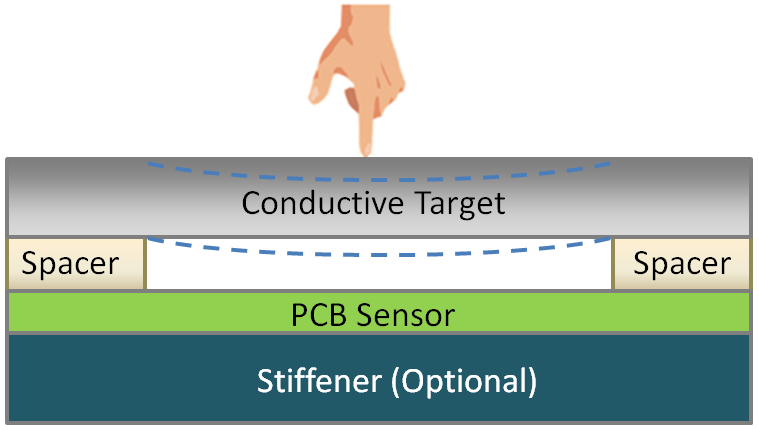SNOA961A February 2017 – February 2023 LDC2112 , LDC2114 , LDC3114 , LDC3114-Q1
- Inductive Touch System Design Guide for HMI Button Applications
- 1Mechanical Design
- 2Sensor Design
- 3Summary
- 4Revision History
1.5.1 Conductive Surface
If the touch button is implemented on a conductive surface, such as aluminum or stainless steel, the surface can be used as the target of detection. In this configuration, the metal target is at the top of the entire stack. The user directly presses the metal target, causing a micro-deflection in the metal itself. The metal deflection will cause a change in the inductance of the sensor coil.
 Figure 1-7 Example Layer Stack With Conductive Surface
Figure 1-7 Example Layer Stack With Conductive Surface